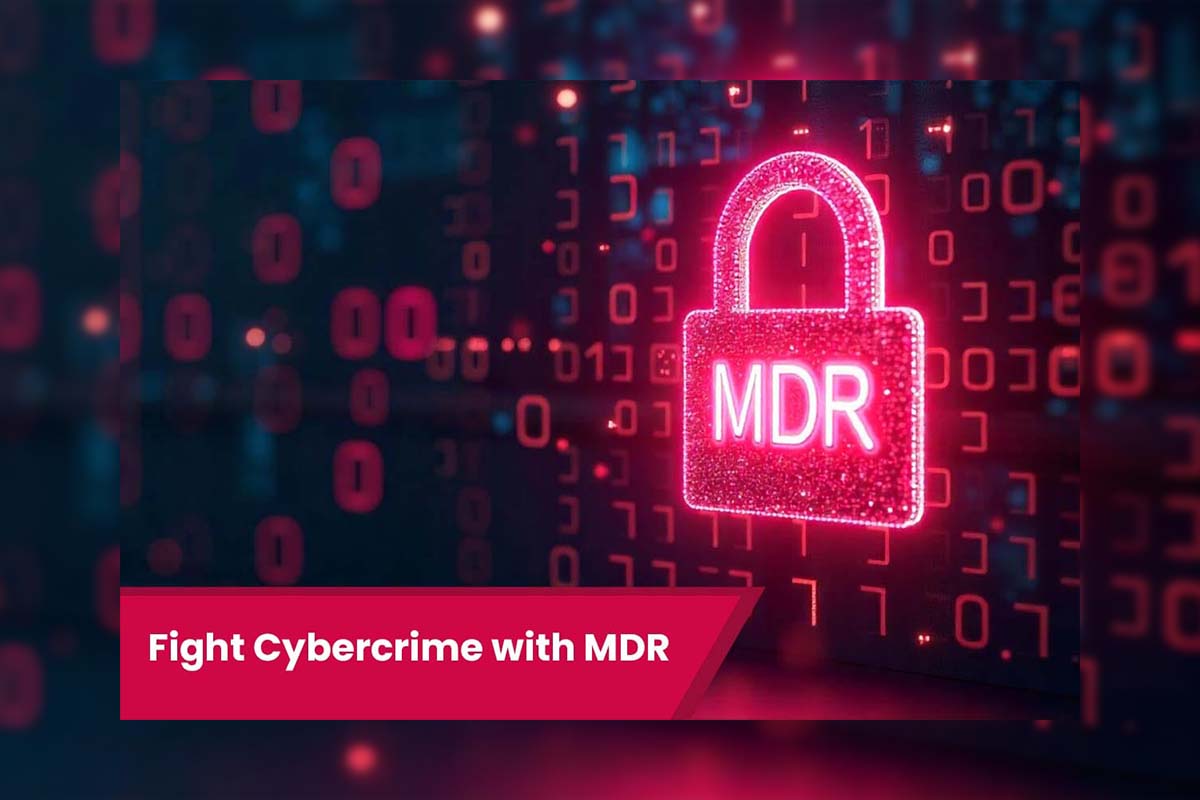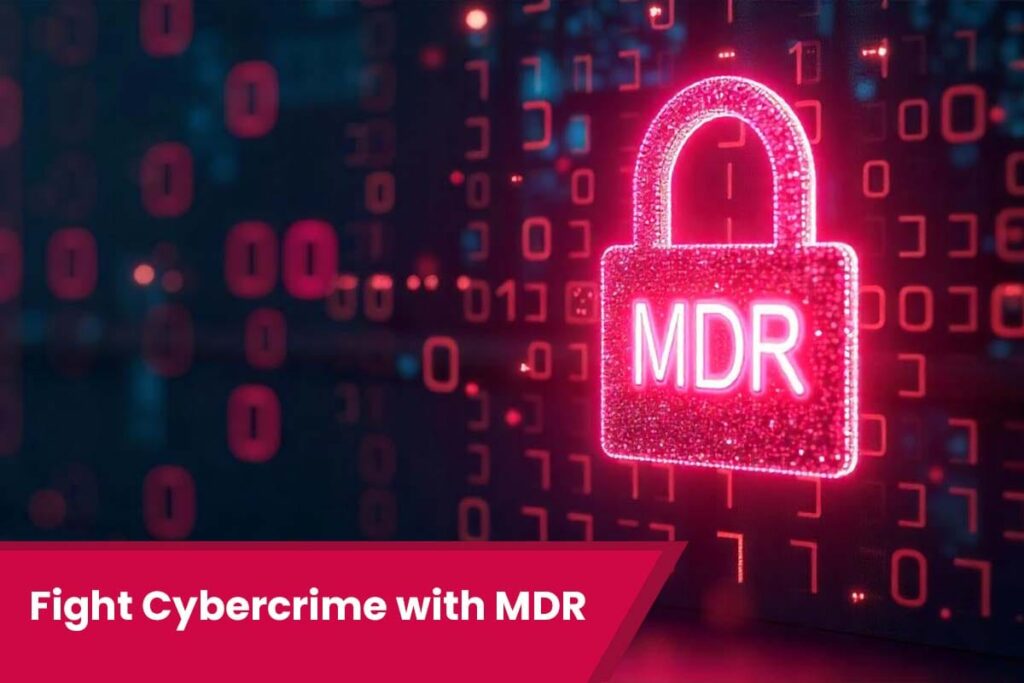





In an era marked by escalating cyber threats, organisations are increasingly recognising the need for proactive cybersecurity measures. Managed Detection and Response (MDR) services have emerged as a vital solution, combining advanced technologies with expert oversight to detect and neutralise threats in real-time. Unlike traditional approaches that focus on perimeter defences, MDR provides continuous monitoring and swift responses to combat sophisticated and evolving attacks.
Australian businesses are particularly vulnerable, with cybercriminals frequently targeting sectors such as healthcare, finance, and critical infrastructure. According to the Australian Cyber Security Centre (ACSC), over 76,000 cybercrime reports were filed in the 2022–2023 financial year, reflecting a 13% increase from the previous year. These statistics underscore the urgent need for businesses to adopt MDR services to safeguard sensitive data and maintain operational resilience. By leveraging real-time threat detection, organisations can significantly reduce the impact of cyberattacks and build a robust cybersecurity posture.
Managed Detection and Response (MDR) is an advanced cybersecurity service designed to identify and respond to threats in real time. Unlike traditional security measures, such as firewalls and antivirus software, which act as static barriers, MDR employs a dynamic defence strategy. It integrates cutting-edge technology with human expertise to continuously monitor, analyse, and respond to cyber threats before they can cause significant harm.
The MDR process is underpinned by three core components:
When compared to traditional cybersecurity tools, MDR provides a dynamic edge by addressing threats in real-time, rather than relying solely on pre-configured rules or periodic updates. While firewalls and antivirus software are essential for baseline protection, they cannot match the sophistication of today’s cyberattacks. MDR bridges this gap by offering real-time cybersecurity solutions that adapt to evolving threats.
A well-executed MDR strategy enables organisations to stay ahead of attackers, ensuring rapid detection and resolution of incidents. By combining technology with expert oversight, MDR delivers a robust defence against cyber threats.
Proactive threat detection is a cornerstone of Managed Detection and Response (MDR), enabling organisations to identify and neutralise risks before they escalate. By leveraging advanced technologies such as artificial intelligence (AI) and machine learning (ML), MDR continuously analyses vast amounts of data to pinpoint anomalies and potential threats. These tools adapt to evolving attack patterns, ensuring a vigilant defence against increasingly sophisticated cyberattacks.
For example, an Australian SME in the financial sector recently avoided a potentially costly phishing attack through the capabilities of MDR. The system detected an unusual email containing a malicious link that appeared to originate from a trusted vendor. Behavioural analysis flagged the email as inconsistent with previous communications, prompting the MDR team to isolate the threat and alert the SME. This swift action not only prevented unauthorised access to sensitive financial data but also underscored the value of predictive cybersecurity.
By anticipating risks, MDR empowers businesses to stay ahead of cybercriminals. This proactive stance is particularly vital for Australian SMEs, which often lack the resources for a full-scale in-house security team but remain frequent targets of cyberattacks.
| Feature | Traditional Methods | MDR Approach |
|---|---|---|
| Threat Detection Speed | Reactive, post-breach | Real-time, proactive |
| Analysis Methods | Signature-based | AI-driven behavioural analytics |
| Response Time | Delayed | Immediate, real-time |
In the face of increasingly sophisticated cyberattacks, real-time incident response is critical to minimising damage and ensuring operational continuity. Managed Detection and Response (MDR) provides organisations with a unique capability to detect, contain, and neutralise threats as they occur, preventing widespread harm to systems and sensitive data.
MDR combines advanced automated tools with the expertise of skilled analysts to deliver immediate responses to cyber incidents. Automated systems identify and isolate malicious activity within seconds, while analysts conduct in-depth assessments to determine the scope of the threat and guide containment efforts. This collaborative approach enables organisations to act decisively, reducing downtime and mitigating potential losses.
Traditional cybersecurity methods often rely on reactive measures that are insufficient against fast-moving threats like ransomware. MDR significantly shortens response times by integrating detection and resolution into a seamless process. This capability is particularly vital for industries such as healthcare, where even brief disruptions can have severe consequences.
Managed Detection and Response (MDR) is not merely a reactive solution but a strategic investment in long-term cybersecurity resilience. By continuously improving threat detection and response capabilities, MDR equips organisations to adapt to evolving cyber risks while maintaining robust defences.
A key aspect of MDR’s effectiveness lies in its ability to integrate real-time threat intelligence and advanced analytics into a continuous feedback loop. This iterative process enables the refinement of detection models, enhancing the system’s ability to identify and mitigate emerging threats. Over time, this adaptability ensures that businesses remain prepared for increasingly sophisticated attack methods.
MDR also plays a critical role in meeting regulatory compliance requirements in Australia, such as ISO 27001 for information security management and PCI DSS for protecting payment card data. These frameworks mandate rigorous security practices, including continuous monitoring and incident response, both of which are integral to MDR services. By aligning with these standards, organisations can reduce compliance risks and enhance stakeholder confidence.
A checklist illustrating MDR’s resilience benefits could include:
Managed Detection and Response (MDR) offers a compelling return on investment (ROI) by mitigating the financial and operational impacts of cyber incidents. While MDR requires an upfront investment, the cost is significantly lower than the potential financial losses resulting from a data breach. According to IBM’s Cost of a Data Breach Report, the average cost of a breach in Australia was AUD 4.5 million in 2023. These costs include downtime, lost revenue, legal fees, and fines associated with non-compliance.
By deploying MDR, organisations reduce downtime through rapid incident detection and response, significantly cutting recovery time. MDR also minimises regulatory fines by ensuring continuous compliance with standards such as ISO 27001 and PCI DSS. Equally important is the protection of customer trust—a key intangible asset. A secure reputation can prevent long-term reputational damage, which often exceeds the direct costs of a breach.
For example, a mid-sized Australian retail business prevented a ransomware attack by leveraging MDR services. This quick response saved the organisation from estimated losses of AUD 1.2 million in downtime and recovery costs, demonstrating the financial benefits of proactive cybersecurity solutions.
| Scenario | Costs Without MDR | Costs With MDR |
|---|---|---|
| Data Breach Response | AUD 4.5 million | AUD 1 million |
| Downtime | AUD 500,000 | Minimal |
| Regulatory Fines | AUD 300,000 | Avoided |
| Reputation Loss | Significant | Protected |
Selecting the right Managed Detection and Response (MDR) provider is a critical step in building a robust cybersecurity strategy. Australian businesses should evaluate providers based on their expertise, certifications, and ability to deliver 24/7 monitoring and incident response services. Providers with established credentials, such as ISO 27001 certification or partnerships with reputable security organisations, demonstrate a commitment to high standards and operational excellence.
One of the key factors to consider is the provider’s ability to customise solutions to meet your organisation’s unique needs. Whether it’s compliance with Australian regulations like the Privacy Act or integration with existing IT infrastructure, flexibility is essential. Additionally, a provider with a proven track record in real-time threat detection and incident response ensures that businesses are well-protected against sophisticated cyberattacks.
Australian businesses can assess potential MDR providers by requesting case studies, client testimonials, and detailed service-level agreements (SLAs). This ensures transparency and alignment with organisational goals. Moreover, scalability is an important consideration, allowing businesses to expand their cybersecurity capabilities as they grow.
A table comparing key features of top MDR providers in Australia could include:
| Feature | Provider A | Provider B | Provider C |
|---|---|---|---|
| 24/7 Monitoring | Yes | Yes | Yes |
| ISO 27001 Certified | Yes | Yes | No |
| Customisable Solutions | Yes | Limited | Yes |
| Australian Support Team | Yes | Yes | No |
Managed Detection and Response (MDR) delivers unparalleled benefits for Australian businesses by combining proactive threat detection with real-time incident response. It strengthens cybersecurity resilience, ensures compliance with regulatory standards, and provides a dynamic defence against evolving threats. By adopting MDR, organisations can safeguard sensitive data, maintain operational continuity, and protect customer trust.
Fort1’s MDR services are tailored to meet the unique challenges faced by Australian businesses. With our expertise, 24/7 monitoring, and scalable solutions, you can stay ahead of cyber threats and build a secure future. Explore Fort One’s MDR offerings today to secure your business with confidence.

Fort1 provides comprehensive cybersecurity solutions tailored to protect your business from evolving digital threats. With expertise in penetration testing, dark web monitoring, and managed detection services, we empower organisations to stay secure and resilient in the face of modern cyber challenges.
Copyright @2024 Fort1. All Rights Reserved by Fort1.